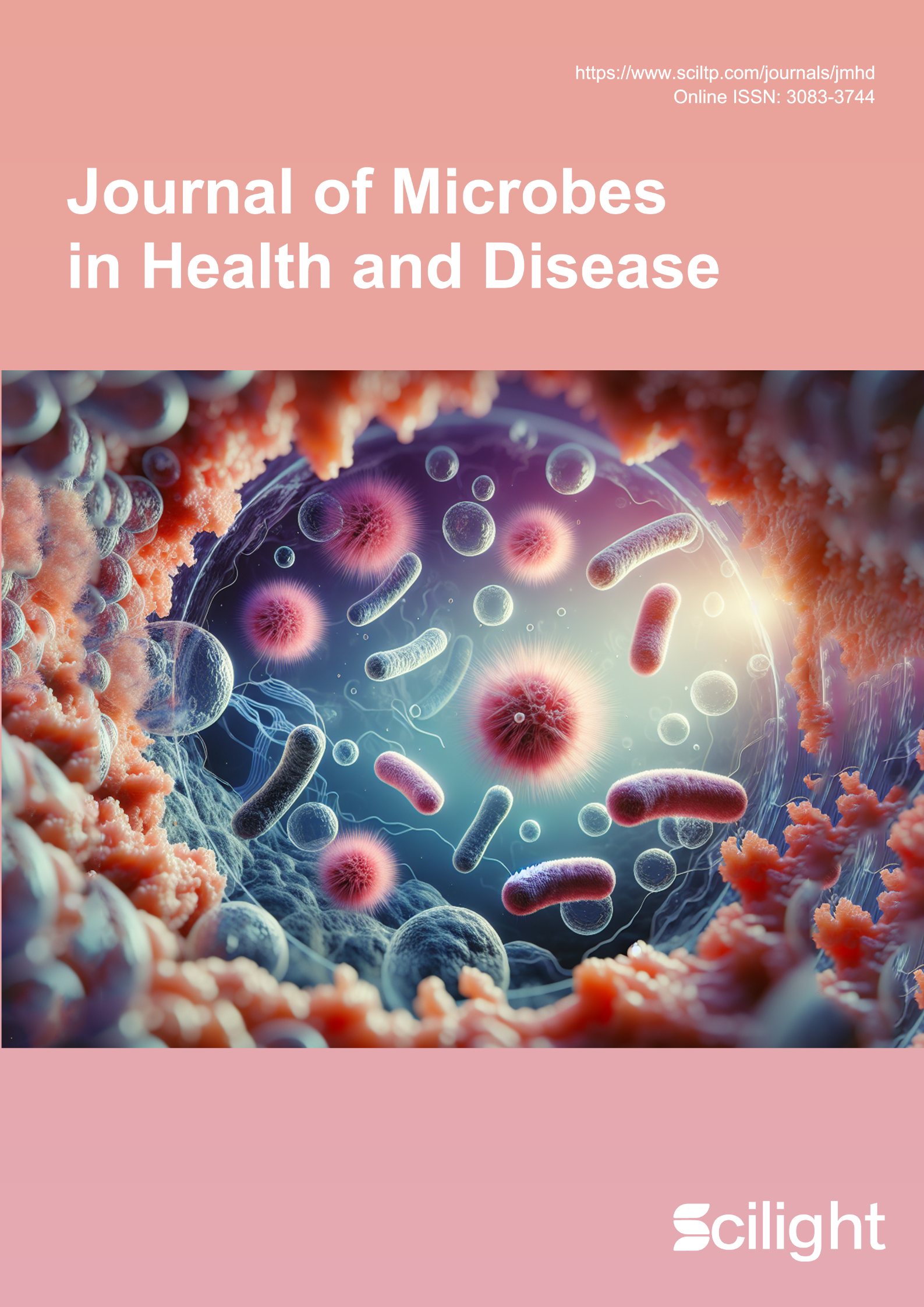- Open Access
- Editorial
Microbial Biofilms in Healthcare-Associated Infections
- Gianfranco Donelli
Author Information
Received: 13 Sep 2024 | Accepted: 25 Sep 2024 | Published: 28 Nov 2024
References
- 1.Høiby, N.; Bjarnsholt, T.; Moser, C.; et al. ESCMID guideline for the diagnosis and treatment of biofilm infections 2014. Clin. Microbiol. Infect. 2015, 21, S1–S25.
- 2.Percival, S.L.; Suleman, L.; Vuotto, C.; et al. Healthcare-associated infections, medical devices and biofilms: Risk, tolerance and control. Med. Microbiol. 2015, 64, 323–341.
- 3.Donelli, G.; Vuotto, C. Biofilm-based infections in long-term care facilities. Future Microbiol. 2014, 9, 175–188.
- 4.Hathroubi, S.; Mekni, M.A.; Domenico, P.; et al. Biofilms: Microbial Shelters Against Antibiotics. Microb. Drug Resist. 2017, 23, 147–156.
- 5.Høiby, N.; Bjarnsholt, T.; Givskov, M.; et al. Antibiotic resistance of bacterial biofilms. Int. J. Antimicrob. Agents 2010, 35, 322–323.
- 6.Römling, U.; Balsalobre, C. Biofilm infections, their resilience to therapy and innovative treatment strategies. J. Intern. Med. 2012, 272, 541–561.
- 7.Flemming, H.C.; van Hullebusch, E.D.; Neu, T.R.; et al. The biofilm matrix: Multitasking in a shared space. Nat. Rev. Microbiol. 2023, 21, 70–86.
- 8.Donelli, G.; Francolini, I.; Romoli, D.; et al. Synergistic activity of dispersin B and cefamandole nafate in inhibition of staphylococcal biofilm growth on polyurethanes. Antimicrob. Agents Chemother. 2007, 51, 2733–2740.
- 9.Kaplan, J.B. Biofilm dispersal: Mechanisms, clinical implications, and potential therapeutic uses. J. Dent. Res. 2010, 89, 205–218.
- 10.Kaplan, J.B.; Sukhishvili, S.A.; Sailer, M.; et al. Aggregatibacter actinomycetemcomitans Dispersin B: The Quintessential Antibiofilm Enzyme. Pathogens 2024, 13, 668.
- 11.Li, X.; Lin, S.; Wang, Y.; et al. Application of biofilm dispersion-based nanoparticles in cutting off reinfection. Appl. Microbiol. Biotechnol. 2024, 108, 386. https://doi.org/10.1007/s00253-024-13120-7.
- 12.Borriello, G.; Werner, E.; Roe, F.; et al. Oxygen limitation contributes to antibiotic tolerance of Pseudomonas aeruginosa in biofilms. Antimicrob. Agents Chemother. 2004, 48, 2659–2664.
- 13.Lewis, K. Multidrug tolerance of biofilms and persister cells. Curr. Top. Microbiol. Immunol. 2008, 322, 107–131.
- 14.Pasquaroli, S.; Zandri, G.; Vignaroli, C.; et al. Antibiotic pressure can induce the viable but non-culturable state in Staphylococcus aureus growing in biofilms. J. Antimicrob. Chemother. 2013, 68, 1812–1817.
- 15.Ciofu, O.; Moser, C.; Jensen, P.Ø.; et al. Tolerance and resistance of microbial biofilms. Nat. Rev. Microbiol. 2022, 20, 621–635.
- 16.Defraine, V.; Fauvart, M.; Michiels, J. Fighting bacterial persistence: Current and emerging anti-persister strategies and therapeutics. Drug Resist. Updates 2018, 38, 12–26.
- 17.Harper, D.R.; Parracho, H.M.; Walker, J.; et al. Bacteriophages and Biofilms. Antibiotics 2014, 3, 270–284.
- 18.Gordon, M.; Ramirez, P. Efficacy and Experience of Bacteriophages in Biofilm-Related Infections. Antibiotics 2024, 13, 125.
- 19.Harriott, M.M.; Noverr, M.C. Candida albicans and Staphylococcus aureus form polymicrobial biofilms: Effects on antimicrobial resistance. Antimicrob. Agents Chemother. 2009, 53, 3914–3922.
- 20.Shirtliff, M.E.; Peters, B.M.; Jabra-Rizk, M.A. Cross-kingdom interactions: Candida albicans and bacteria. FEMS Microbiol. Lett. 2009, 299, 1–8.
- 21.Schlecht, L.M.; Peters, B.M.; Krom, B.P.; et al. Systemic Staphylococcus aureus infection mediated by Candida albicans hyphal invasion of mucosal tissue. Microbiology 2015, 161, 168–181.
- 22.Adlhart, C.; Verran, J.; Azevedo, N.F.; et al. Surface modifications for antimicrobial effects in the healthcare setting: A critical overview. J. Hosp. Infect. 2018, 99, 239–249.
- 23.Bertesteanu, S.; Chifiriuc, M.C.; Grumezescu, A.M.; et al. Biomedical applications of synthetic, biodegradable polymers for the development of anti-infective strategies. Curr. Med. Chem. 2014, 21, 3383–3390.
- 24.Francolini, I.; Vuotto, C.; Piozzi, A.; et al. Antifouling and antimicrobial biomaterials: An overview. APMIS 2017, 125, 392–417.
- 25.Brackman, G.; Coenye, T. Quorum sensing inhibitors as anti-biofilm agents. Curr. Pharm. Des. 2015, 21, 5–11.
- 26.Fleming, D.; Rumbaugh, K.P. Approaches to Dispersing Medical Biofilms. Microorganisms 2017, 5, 15.
- 27.Roy, R.; Tiwari, M.; Donelli, G.; et al. Strategies for combating bacterial biofilms: A focus on anti-biofilm agents and their mechanisms of action. Virulence 2018, 9, 522–554.
- 28.Coenye, T.; Ahonen, M.; Anderson, S.; et al. Global challenges and microbial biofilms: Identification of priority questions in biofilm research, innovation and policy. Biofilm 2024, 4, 100210.
- 29.Vuotto, C.; Donelli, G. Novel Treatment Strategies for Biofilm-Based Infections. Drugs 2019, 79, 1635–1655.
- 30.Lu, L.; Hu, W.; Tian, Z.; et al. Developing natural products as potential anti-biofilm agents. Chin. Med. 2019, 14, 11.
How to Cite
Donelli, G. Microbial Biofilms in Healthcare-Associated Infections. Journal of Microbes in Health and Disease 2025, 1 (1), 100001. https://doi.org/10.53941/jmhd.2025.100001.
RIS
BibTex
Copyright & License

Copyright (c) 2025 by the authors.
This work is licensed under a Creative Commons Attribution 4.0 International License.
Contents
References


